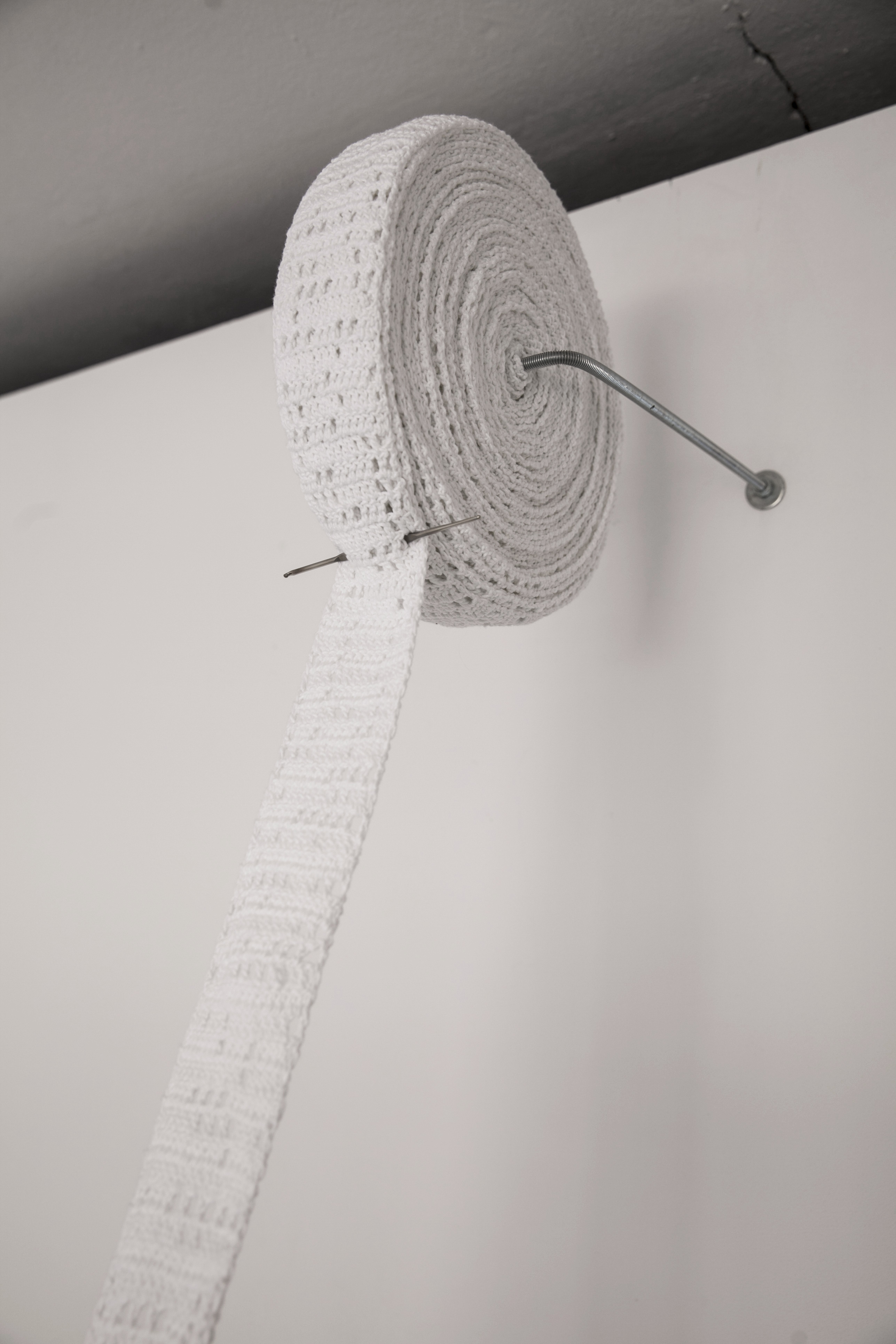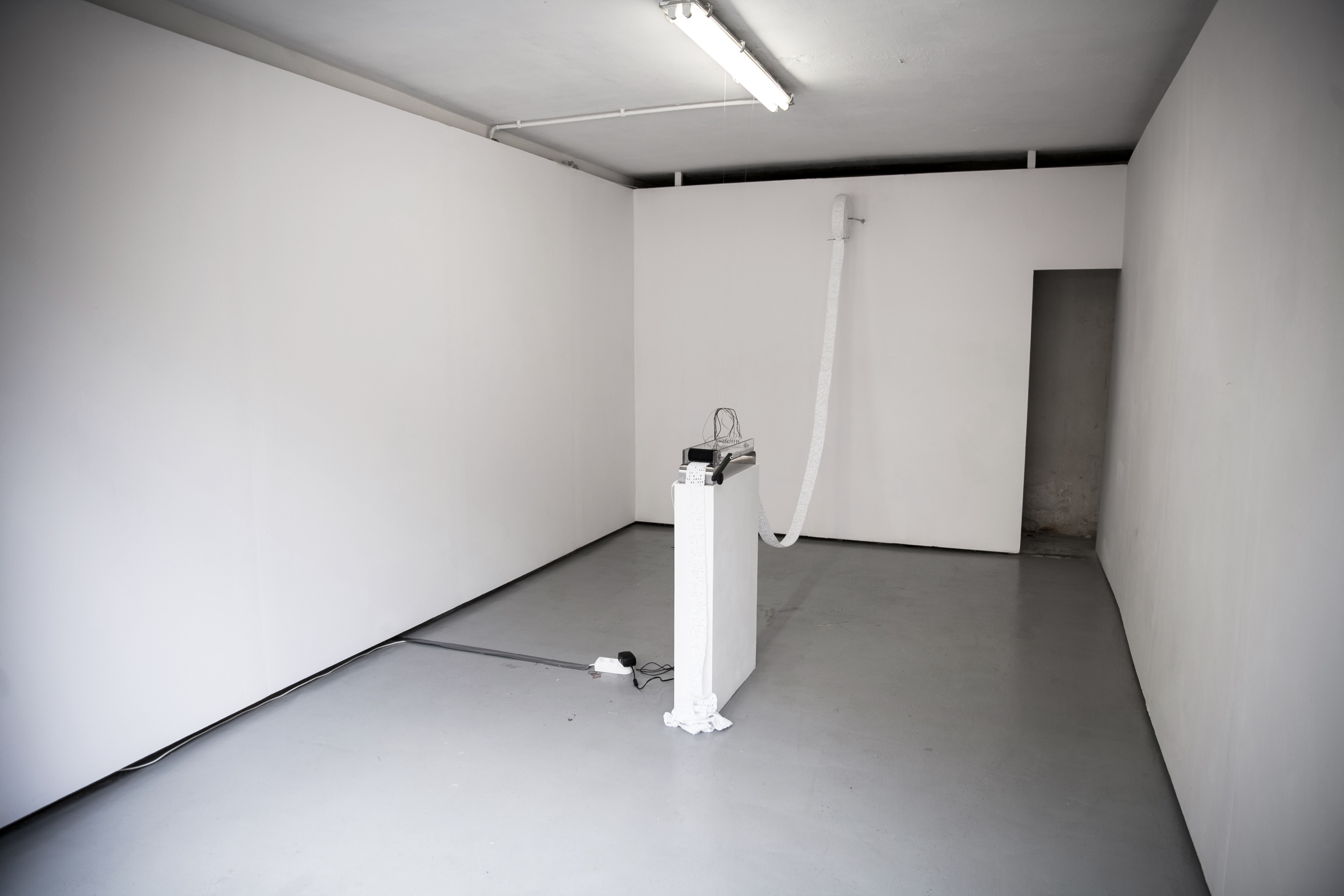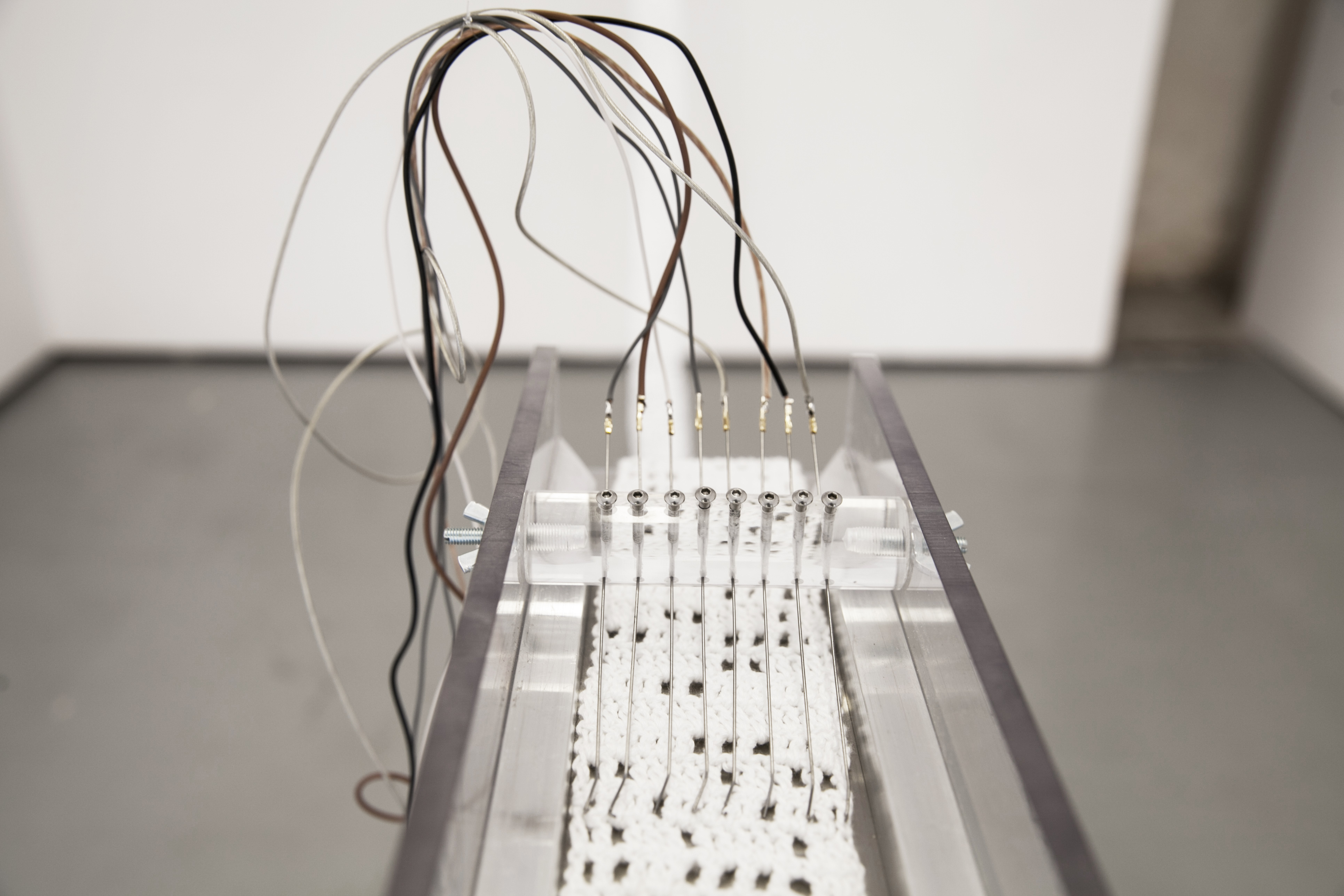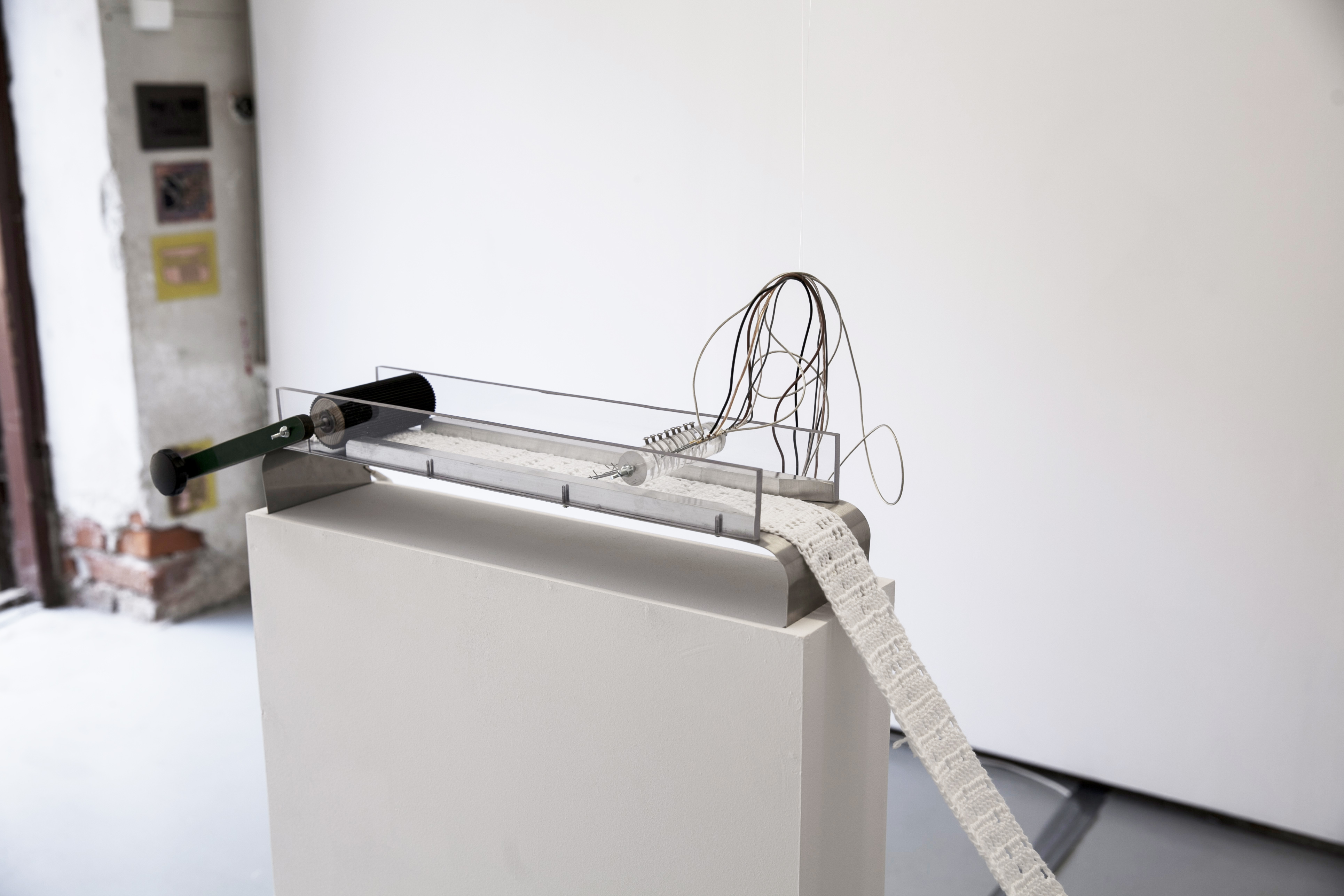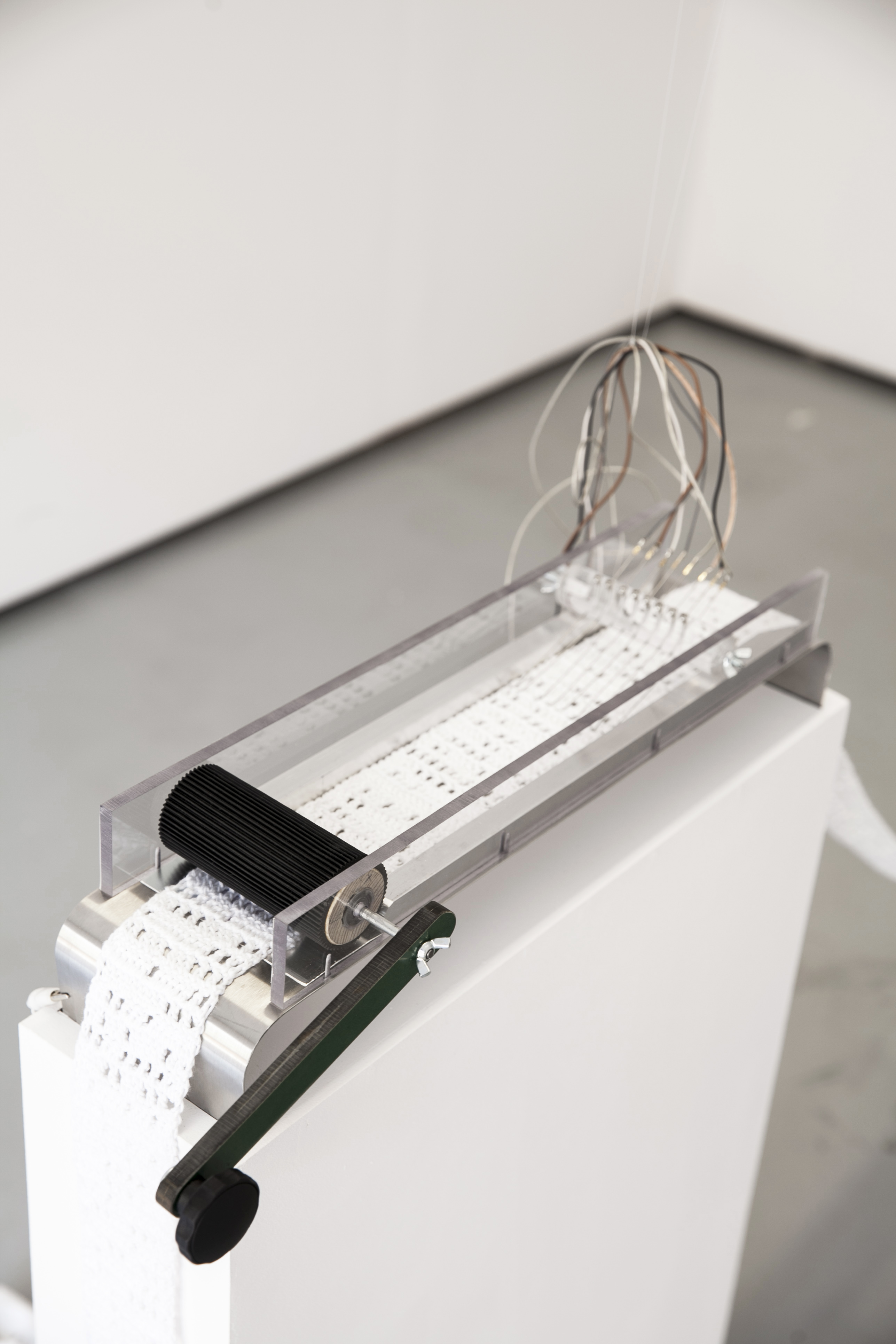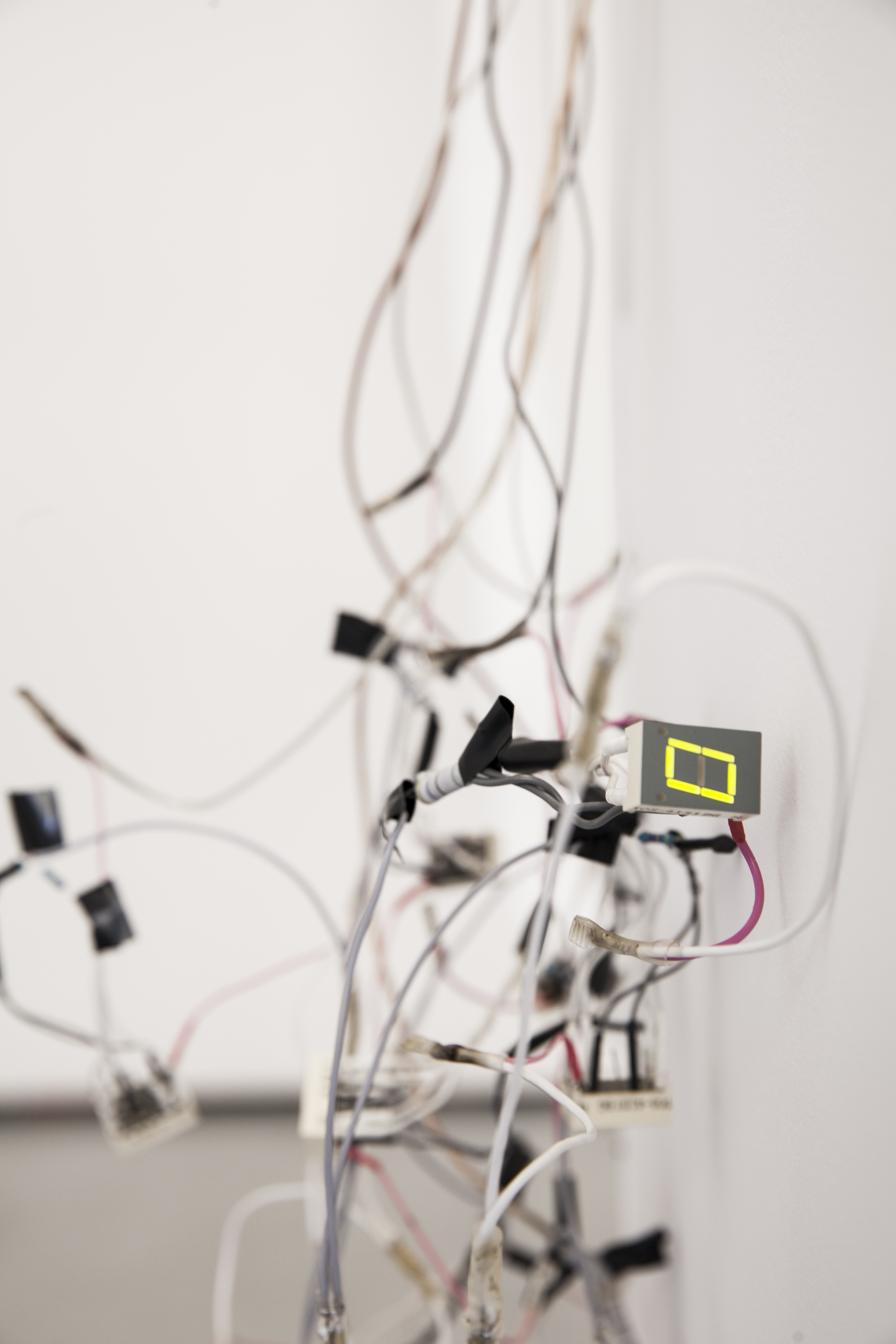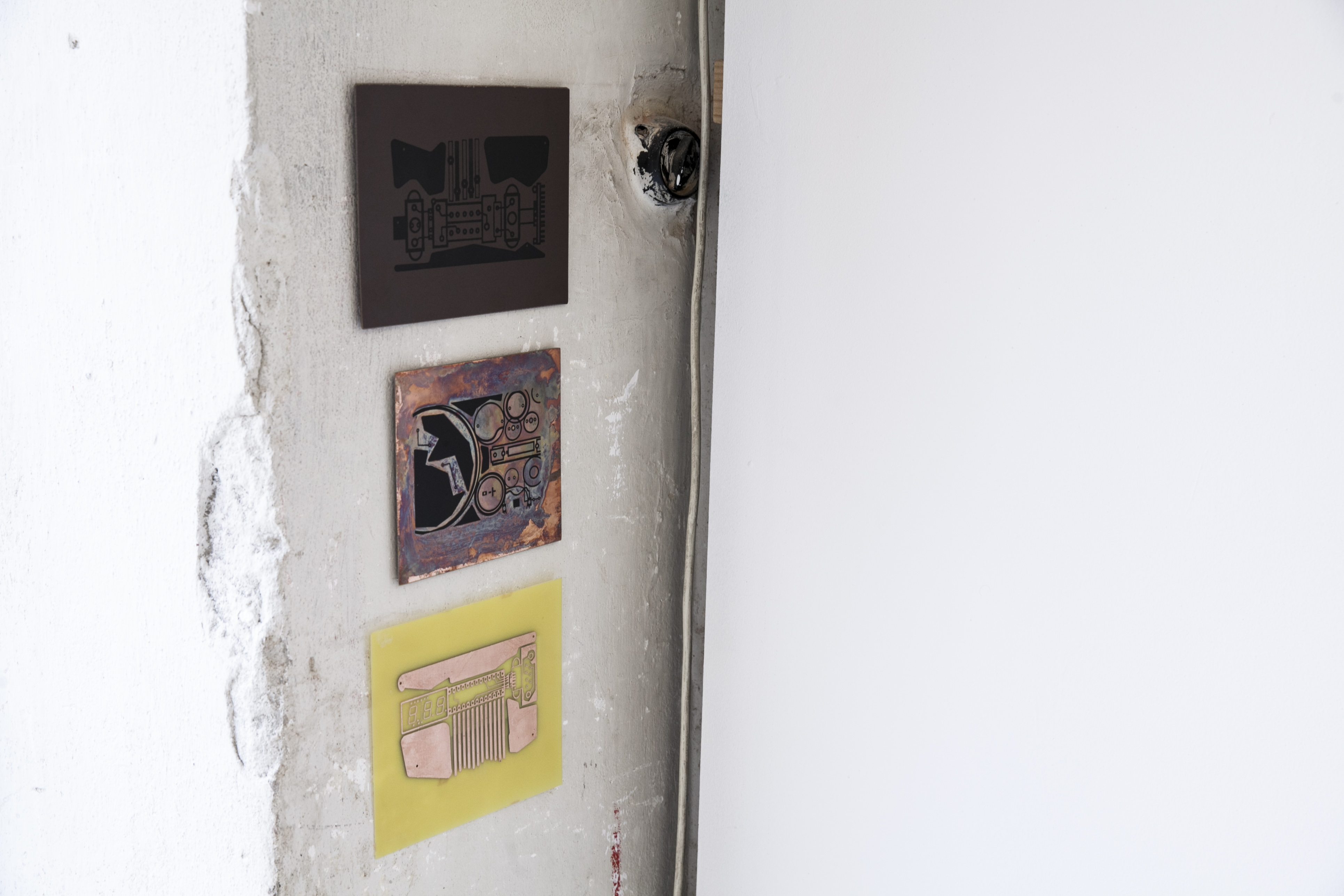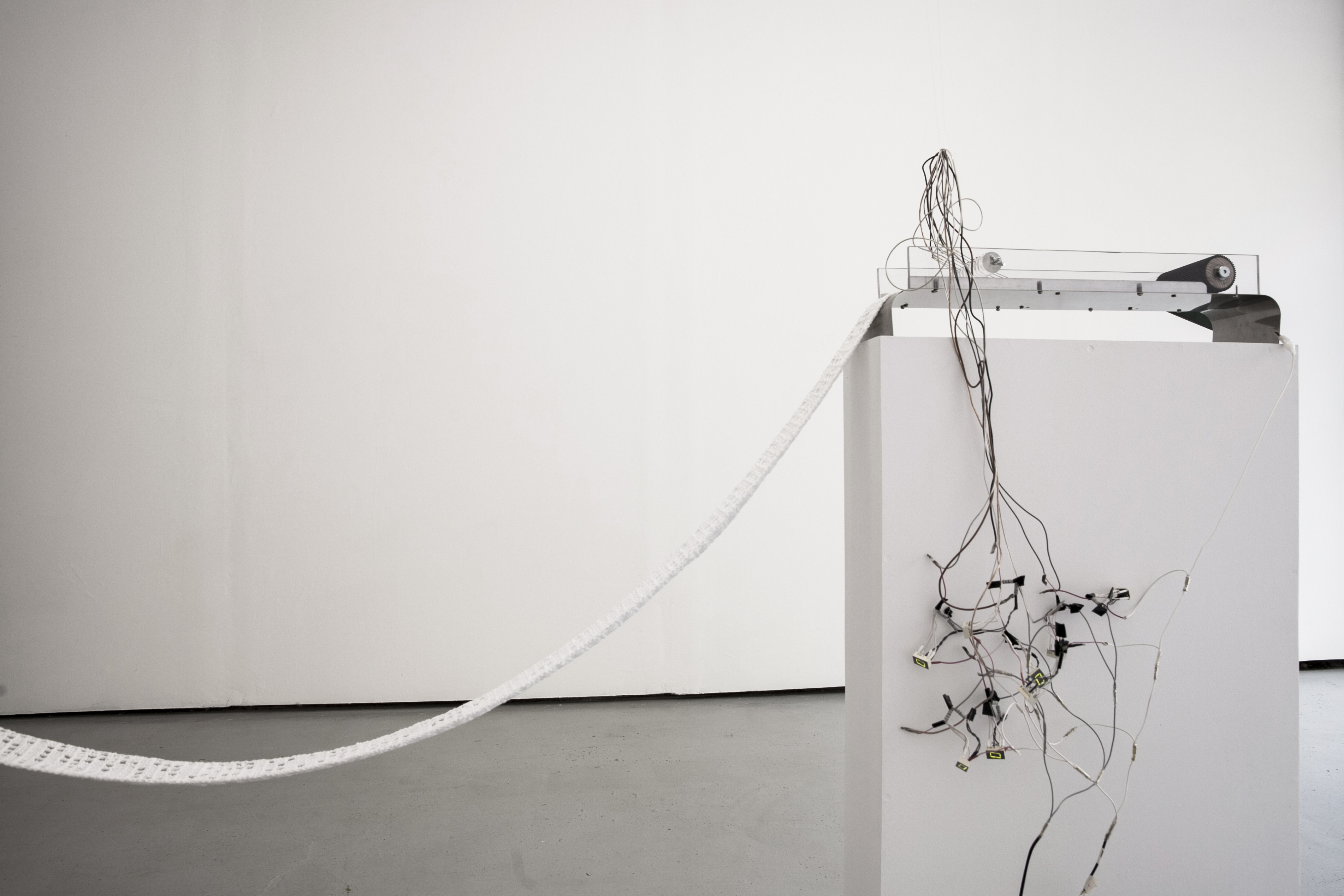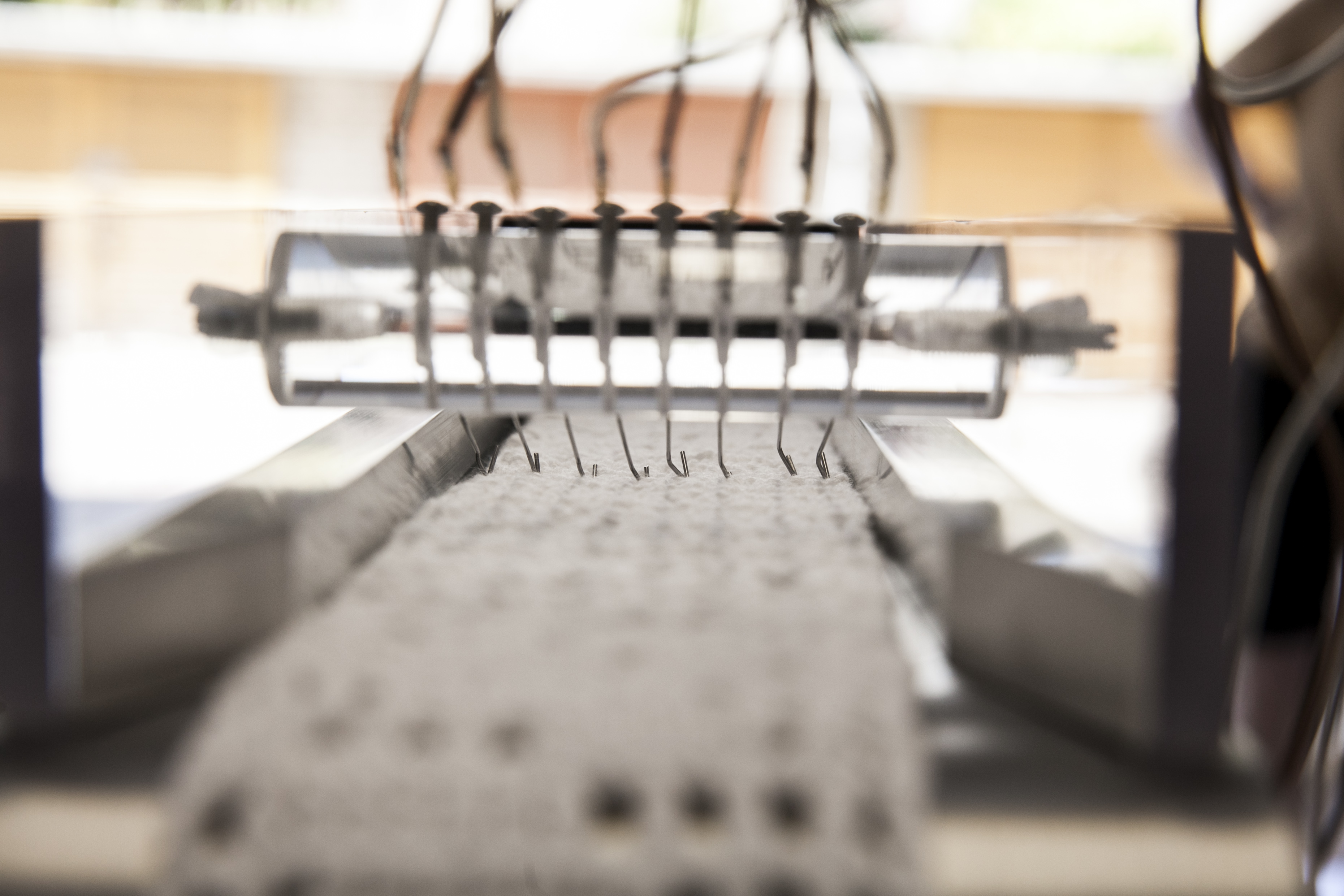compiler (/kəmˈpʌɪlə/): a program that automatically translates code written in one language (source) into another language (target). The process of translation from a high-level language to a lower-level language, in order to create an executable program, is called compilation.
The exhibition Compiler is inspired by the story of Ada Lovelace— aka Lady Byron — the forgotten mathematician who wrote the first computer program. The program was designed for the so-called Analytical Engine – a machine that was never finished due to a lack of technology to support the idea. The Engine was supposed to process data based on information fed via punch cards. Punched or perforated cards-as-data-carrier were borrowed directly from the Jacquard loom – the machine that among other things, played a pivotal role in the birth of the industrial revolution.
Compiler is composed of one long punch card made of crocheted yarn and a speculative machine designed to decipher it. Crocheting is a technique widely associated with craft, decoration, the home, a woman’s past-time. I have never been drawn to this technique and had to learn from 0 in order to create this piece (allegedly crocheting and knitting can also be used as means of torture). The person who taught me how to do it in fact crocheted 2/3 of the piece.
Digits are fingers, thumbs, and toes, binary is fiction. Think about the bodies of female textile workers, remember the story about the Harvard Computers, female calculating bodies. Compiler is a study of the digital, technology, idea to material translations, and the human bodies that inspire and create abstract languages and tools.
“The Analytical Engine weaves algebraical patterns just as the Jacquard-loom weaves flowers and leaves.” // Ada Lovelace
